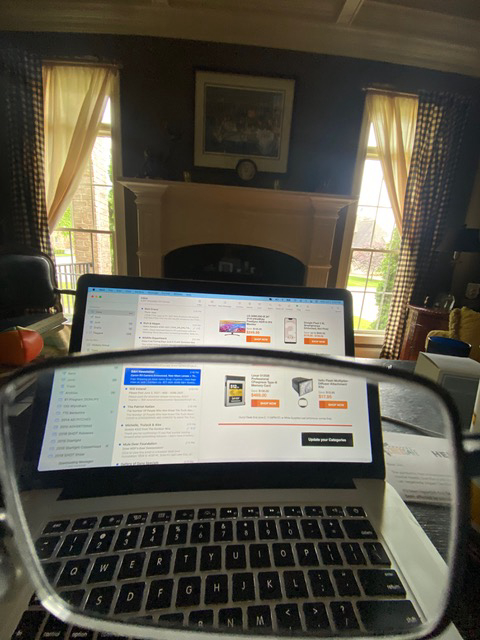What is your Focal Point?
 |
As we grow older there comes an age when our arms are not long enough to focus on small letters, bluntly, we can’t see clearly without the aid of glasses. For this writer, conservation worker, active hunter and target shooter, it was at the age of 40 when I went to read the back of the toothpaste tube when brushing my teeth. I called out to my wife that they had messed up the printing. It was blurry to unreadable. She took a fast look and told me there was nothing wrong with the printing. My eyes changed that fast from 20/20.
Off to the optometrist for my first set of glasses and yes, I needed bifocals. I remember stepping off the curb after putting them on the first time and feeling like I had stepped off the edge of the earth. The doctor told me the first change most likely would be the most significant. It was, not to mention a new learning process.
I operate tractors, bulldozers and about every other kind of equipment there is on the farm, even my truck was hard to see the dashboard display at times with the glasses. Conclusion, even with the new specs I could not see clearly in some circumstances. It was not until the VA took over my eye care that a great doctor told me the mystic secrets of eye ware. I learned there are adjustments that can be made to glasses when made. To me that is improving my quality of life.
What is your focal point? All glasses are made to a standard focal point that was set when people did not work on monitors and held books to read at a standard approximately 16 inches. That will not cut it when operating machinery or monitors that are 24 inches or more from your eyes. Measure the distance from your eye to the monitor for example and see what it is. Mine are about 24 inches to 28 inches (second monitor), not 16. Measure the distance from your eye to the dashboard display of your truck or car and you will find it is even farther. If your glasses are made to the 16-inch focal point, it will be hard to see especially at night. Have your new glasses set or made to your focal point, it does not cost more.
Second, constantly turning around to watch the tractor attachments, PTO running, backing up in the woods or clearing the area for obstacles, the normal bifocal glasses leave you stranded if you turn to look past the bifocal area on the edges of the glasses. My glasses are made with very wide coverage of the bifocal so when I turn, they still allow good vision to the edges of my glasses. You have to ask to have this done or you will get the standard issue. This adjustment does not cost any more either.
Third, I have the bifocal top edge made to sit at the center of my pupil. This allows me to quickly use the bifocal or long-distance portion of the glasses. This is a huge advantage when watching equipment and moving from close in to farther out when dozing, using the backhoe or bush hogging, or the best one, getting focused on flushing birds. Again, you have to ask for it.
Along with all of the “custom” making of my glasses, again which does not cost any more, I have the largest pads installed for more comfort and greater area resting on my nose bridge. I’m older and don’t want an uncomfortable pair of glasses taking away from my enjoyment of the outdoors. I do enjoy operating equipment in the woods and fields doing every kind of wildlife habitat work there is. Why not “see” what I’m doing better?
Further, as we get older, stress will affect your vision no matter how good the glasses are. If you are over tired or stressed, there is always another day. The chance of accidents increases substantially when you are tired. Fully rested is a great way to start a day outdoors. One indicator for me, when my boots get to feel like lead weights, and you all know what I mean, I stop, day is over.
The message, get an idea of your focal point and talk to your eye care specialist. I’m glad I had one who asked the questions to let me know how he could better help what I do.
— Craig Alderman
Craig is a former Air Force Pilot, founder of the Quail and Upland Wildlife Federation and an active on-the-ground, wildlife habitat and clean streams enthusiast.